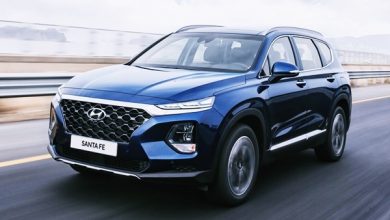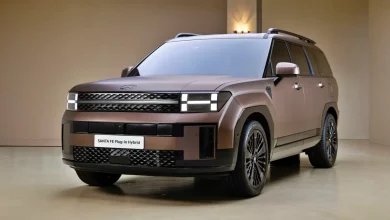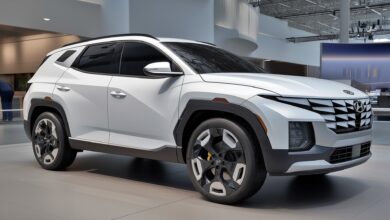2026 Hyundai Santa Fe MX5: Price, Specs, Features & Everything We Know
2026 Hyundai Santa Fe MX5
Forget everything you thought you knew about the Hyundai Santa Fe. With the arrival of the fifth generation, internally coded MX5 launched for the 2024 model year, Hyundai didn’t just update its stalwart mid-size SUV; it ripped up the playbook and started fresh.
As we look towards the 2026 Hyundai Santa Fe, we’re essentially looking at a continuation of this audacious redesign – a vehicle that swaps flowing curves for confident creases and prioritizes presence and practicality in a way its predecessors never did.
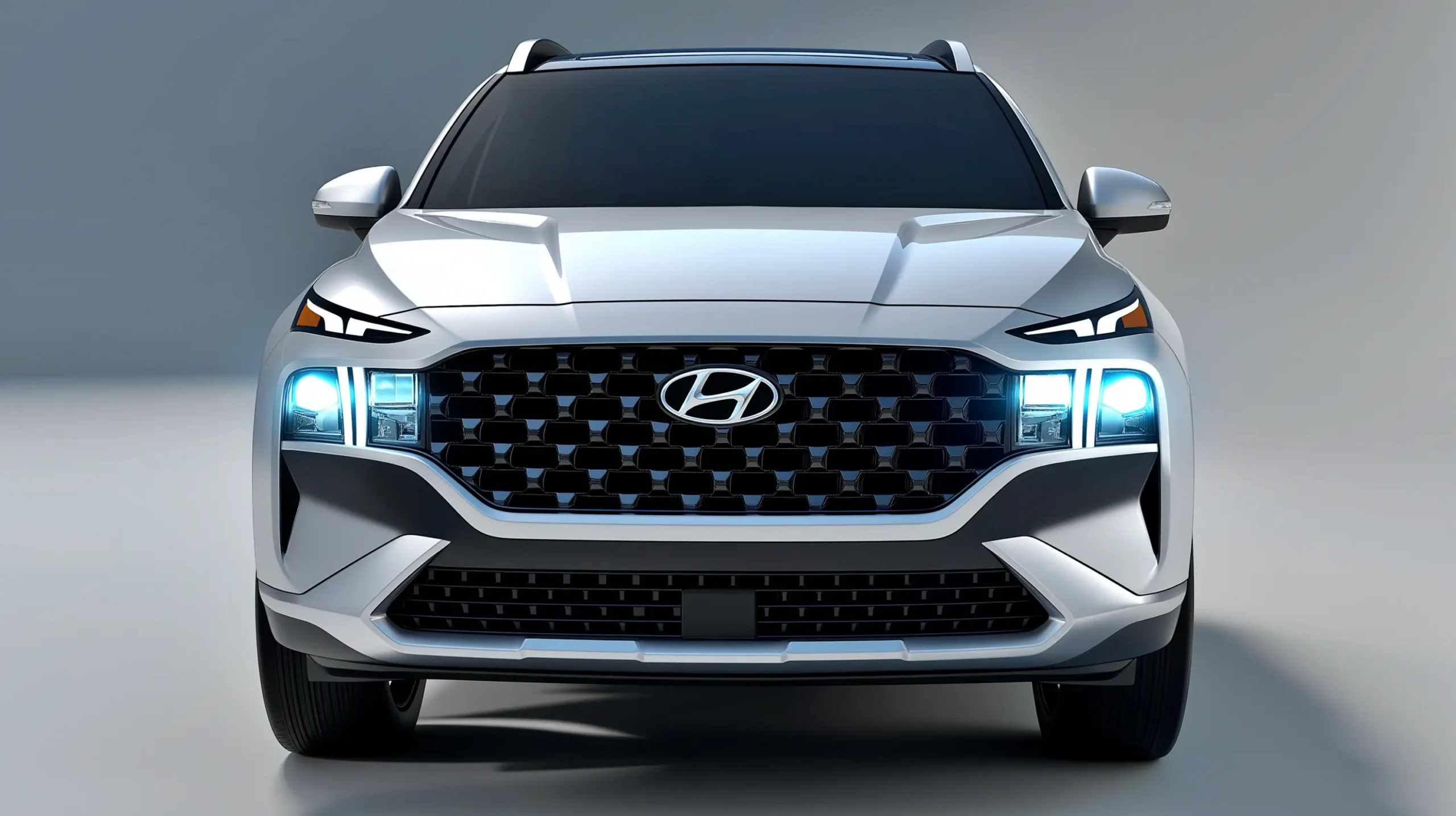
For years, the Santa Fe carved out a niche as a competent, value-packed, if slightly anonymous, family hauler.
The MX5 generation, however, screams for attention. It’s a confident stride into a more design-forward space, clearly taking inspiration from luxury off-roaders while forging its path.
But does the substance match the striking style? Based on extensive reviews of the foundational 2024 and 2025 models, the answer is largely yes, albeit with a few characteristic quirks.
Exterior: Tonka Tough or Tech-Forward?
Let’s address the elephant – or perhaps, the meticulously folded metal origami – in the room: the styling.
The 2026 Santa Fe will continue the MX5’s shockingly rectilinear design. It’s unabashedly boxy, featuring sharp angles, a nearly vertical tailgate, and a commanding presence amplified by its increased length and wheelbase compared to the previous generation.
The front is dominated by distinctive H-shaped LED daytime running lights integrated into a wide, upright grille – a motif echoed in the surprisingly low-set, wide taillights.
It’s a design that draws comparisons to Land Rover but retains a uniquely Hyundai, tech-infused aesthetic.
Details like the subtly integrated grab handle in the C-pillar for easier roof rack access showcase thoughtful practicality baked into the bold form.
Trim levels influence the look significantly: lower trims ride on sensible 18-inch wheels, while the range-topping Calligraphy boasts intricate 21-inch alloys.
The XRT trim leans into the rugged vibe with dark finishes, chunkier all-terrain tires, and slightly more ground clearance, though it remains more of an aesthetic package than a true rock-crawler.
Love it or merely find it interesting, the Santa Fe MX5 design is undeniably distinctive in a sea of me-too crossovers.
Interior: Space, Screens, and Smart Storage
Step inside, and the geometric theme continues but translates into impressive practicality. The upright exterior pays dividends with a spacious, airy cabin.
Hyundai has embraced horizontal lines, dominated by a panoramic curved display housing twin 12.3-inch screens – one for the digital instrument cluster and one for the central infotainment touchscreen – under a single pane of glass (standard on most trims, base SE might differ slightly).
The system is responsive, graphically sharp, and relatively intuitive, supporting wireless Apple CarPlay and Android Auto.
Material quality is generally a step up, particularly in higher trims like the Limited and Calligraphy, which feature Nappa leather, open-pore wood trim, and soft-touch surfaces generously applied.
However, even top-spec models aren’t immune to some harder plastics, particularly noticeable on the middle door panels – a slight letdown given the premium aspirations.
Where Santa Fe truly excels is in storage and usability. There’s a massive open shelf below the center console, another shelf above the glovebox (which itself has a secondary upper compartment), generous door bins, and clever touches throughout. The relocation of the gear selector to the steering column frees up significant console real estate.
Crucially, the MX5 generation Santa Fe comes standard with three rows of seating across all trims. The front two rows offer ample space and comfort, with available features like heated and ventilated seats, and even a relaxation function for the driver’s seat.
The third row, however, is best reserved for occasional use or smaller passengers, as legroom is tight compared to larger rivals like the Hyundai Palisade or Kia Telluride.
Cargo space benefits immensely from the boxy shape and longer body, offering competitive volume behind the third row and expanding significantly with the seats folded flat – easily swallowing luggage, gear, or bulky shopping hauls. The wide, low-loading tailgate opening is another practical boon.
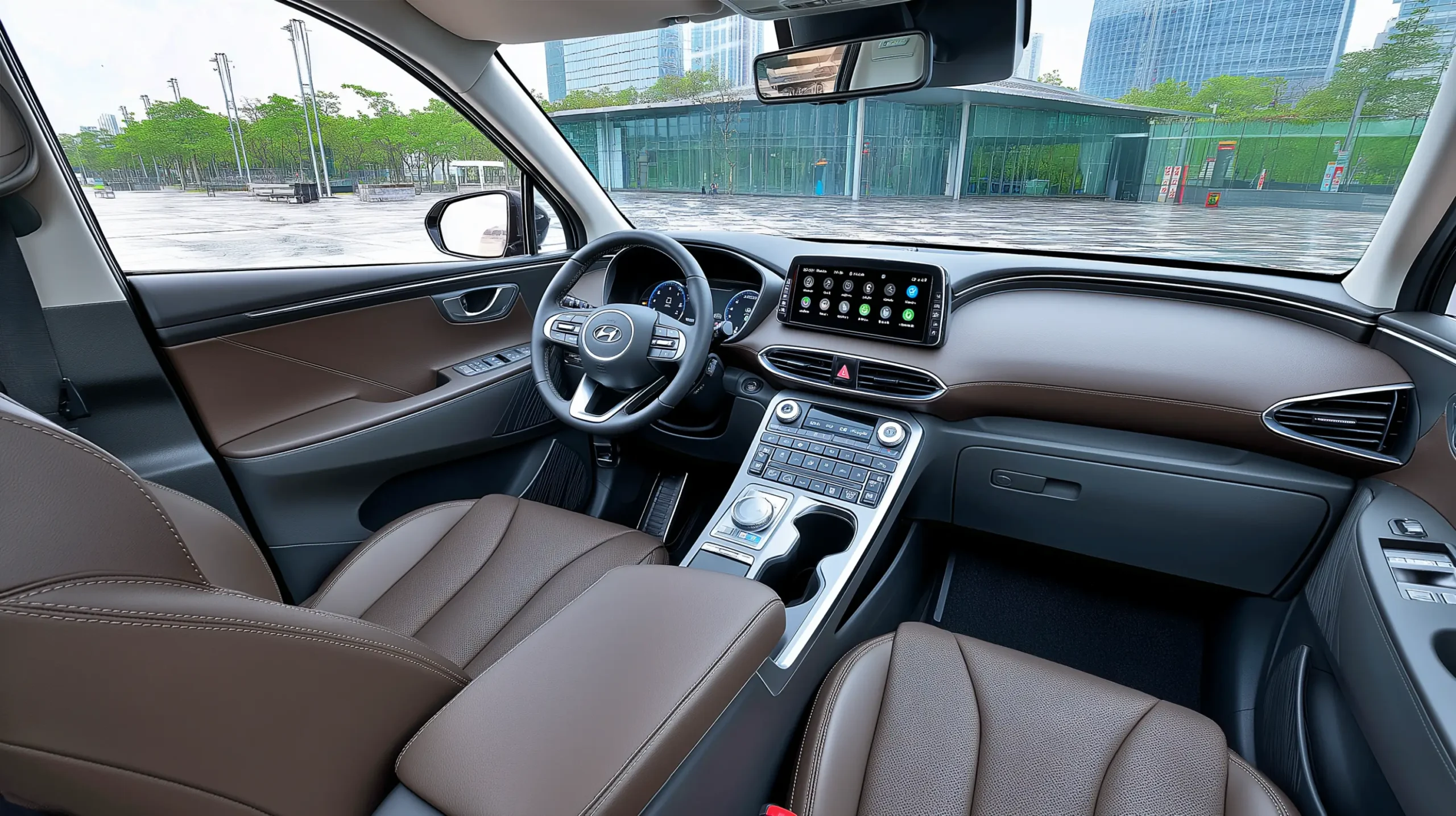
Powertrain & Performance: Turbo Punch vs. Hybrid Prudence
For the 2026 model year, expect the powertrain options to carry over from 2024/2025:
- 2.5L Turbocharged Inline-4: The standard engine across most of the lineup, producing a healthy 277 horsepower and 311 lb-ft of torque. Paired with an 8-speed dual-clutch automatic transmission (DCT), it provides brisk acceleration, hitting 60 mph in the low-to-mid 6-second range in AWD configuration. While responsive, some reviewers note the engine can sound a bit coarse under heavy acceleration, and the DCT can occasionally exhibit low-speed hesitancy typical of the transmission type. Its most significant drawback is fuel economy; EPA ratings hover around 22-24 mpg combined, and real-world testing often yields figures below that.
- 1.6L Turbocharged Hybrid: Available on select trims, this powertrain combines a 1.6-liter turbo-four with an electric motor for a combined system output (exact figures vary slightly by source but typically around 231 hp combined system output for the standard hybrid in other markets, though specs might be tuned differently). It uses a conventional 6-speed automatic transmission, offering smoother low-speed operation than the DCT. While not as punchy as the 2.5T, performance is perfectly adequate for daily driving. The big win here is fuel efficiency, with EPA estimates reaching into the mid-30s mpg combined – a significant improvement that makes it the smarter choice for fuel-conscious buyers.
On the road, the Santa Fe prioritizes comfort. The ride is generally smooth and composed, effectively soaking up most road imperfections.
Handling is secure and predictable but leans towards relaxed cruising rather than sporty engagement – rivals like the Mazda CX-90 offer a more dynamic driving experience. Steering is light and accurate, making it easy to maneuver in town.
Cabin noise is well-suppressed, contributing to a refined feel, though some minor wind noise from the A-pillars has been noted at highway speeds.
Hyundai’s comprehensive SmartSense suite of driver-assistance features comes standard, including adaptive cruise control, lane-keeping assist, and forward collision warning, all generally working unobtrusively.
Value and Verdict: Looking Ahead to 2026
Hyundai continues to deliver strong value. Even base SE trims are reasonably equipped, while the mid-range SEL strikes an excellent balance of features and price, adding niceties like the larger screens and enhanced driver aids.
The Limited and Calligraphy trims pile on luxury features, pushing the price towards near-premium territory but still undercutting many competitors.
And underpinning it all is Hyundai’s unbeatable warranty: 5 years/60,000 miles basic and 10 years/100,000 miles powertrain coverage, plus complimentary maintenance for three years.
Competitors remain fierce. The mechanically similar Kia Sorento offers similar powertrains (including a plug-in hybrid option not found on the Santa Fe) in a different wrapper.
The Kia Telluride and Hyundai Palisade offer more third-row and cargo space. The Honda Pilot, Toyota Grand Highlander, and Mazda CX-90 are all strong contenders offering varying blends of practicality, efficiency, and driving dynamics.
So, what to expect for the 2026 Hyundai Santa Fe? Given the comprehensive overhaul for 2024, major changes are unlikely.
Expect carryover styling, powertrains, and interior design. Potential updates might include minor trim shuffling, new paint color options, or perhaps refinements to software or feature availability.
The core package – the bold design, spacious and tech-filled interior, standard three rows, and choice between punchy turbo or efficient hybrid power – will remain.
The MX5 generation Santa Fe isn’t just an evolution; it’s a statement. It’s a compelling choice for families who want practicality and technology wrapped in a design that refuses to blend in.
While the standard engine’s thirst and the merely adequate third row are points to consider, the overall package, especially with the hybrid powertrain, makes the 2026 Hyundai Santa Fe a distinctive and highly competitive player in the crowded mid-size SUV arena. It’s a bold move, and for many buyers, it will be exactly the right one.

